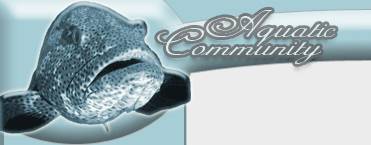Marine Aquariums: pH and Alkalinity
pH (Power of Hydrogen) levels and the alkalinity in saltwater aquarium are important parts of the marine aquarium. This is a matter of constant concern even to seasoned aquarists. The marine life in a reef tank is heavily dependent on a constant range of pH just for survival.
Put very simply, pH is actually the measure of acidity or alkalinity in water. 7 is considered to be neutral pH - neither acidic nor alkaline. Any pH reading above 7 is considered to be alkaline, while a pH reading below 7 is acidic.
Generally, pH levels ranging from 8.1 to 8.4 are acceptable in saltwater tanks. But, reef tanks tend to be a bit more sensitive and the optimum pH levels in these tanks need to be more towards the higher levels. There are certain factors that normally contribute towards a low pH level within the reef tank. Adding acids into a tank will naturally make it more acidic. These acids are actually natural by-products of the life processes that take place within a tank. Some of the most important acids that can be listed are: CO or Carbon dioxide, nitric acids and organic acids. . Carbon dioxide is released regularly due to the respiratory processes of the fish. Excess Carbon Dioxide clogs the water when there is insufficient gas exchange within the tank Nitrification or a collection of nitric acid due to biological filtration leads to the deposit of nitric acids within the tank. Metabolic wastes of the fish leads to a collection of organic wastes in the water. This turns acidic if the waste is not cleared off soon.
Seawater also contains all of these contributory elements in it, then why does not the seawater become too acidic for the fish? The simple answer is: the seawater also has lots of natural buffers like calcium, carbonate, borate and bicarbonate. These buffers pull up the pH of the water and thus neutralize the effect of the acidic components.
Alkalinity of water refers to the calcium hardness of the water. This is the degree to which a solution's pH can be maintained when acid is added to this medium. Higher alkalinity prevents rapid pH changes. In the case of seawater, the amount of natural buffers in it will decide its alkalinity. In a tank, there are no natural buffers. The pH in a tank needs to be monitored on a DAILY basis to ensure that it is stable and within the desired limits. If the pH in the tank starts to reduce, then that means the buffers being used are wearing thin. There is a quick fix solution to this problem. The easiest way is to add some baking soda, or bicarbonate of soda into the water. There are a number of buffering products that are readily available in the market.
Treating your water with too many chemicals and commercial products is not recommended. The tried and tested, sure fire method of reducing acid build up within your tank is water change. Regular partial water change is most effective in controlling the pH of reef tanks. The next best method is to remove all fish wastes and debris from the tank. This is also achieved when you change the water. Water change refreshes the natural buffers in your water, it also adds to the trace minerals in the water. While adding buffers, they should be thoroughly cleaned in fresh water before their introduction into the tank.
If the pH reading in a reef tank fluctuates wildly, this shows that certain water parameters may be endangering the life of the inhabitants in an aquarium. Use of pH measuring kits that help to ascertain the pH balance within a tank is a must for all reef systems.
Didn't find the info you were looking for? Register for free and ask your question in our Aquarium forum !
Related Articles
Marine aquariums: Ammonia - an introduction to Ammonia in marine aquariums.
Marine aquariums: Nitrates - an introduction to Nitrates in marine aquariums.
Saltwater aquarium setup - An introduction to marine aquariums for beginners.
